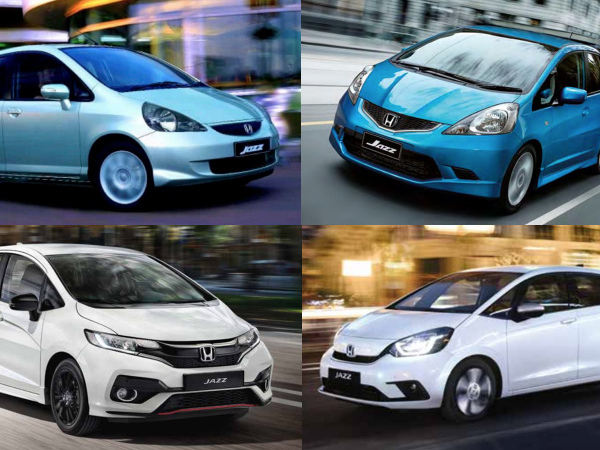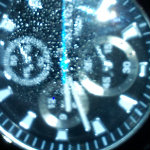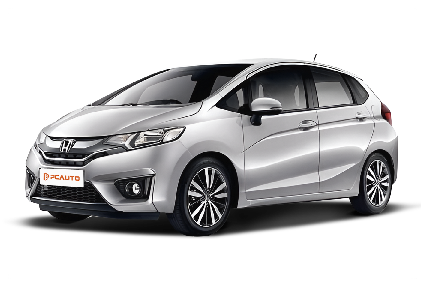Q
how to change honda jazz windscreen wipers
Swapping out the wiper blades on your Honda Jazz is actually super straightforward. First things first, you need to grab the right replacement blades. For the second-gen Jazz (GD/GE models), you're typically looking at a 26-inch blade for the driver's side and a 14-inch one for the passenger side. The third-gen (GK models) though, might use a 26-inch and 16-inch combo. Pro tip: double-check your car's year before buying to make sure you get the correct sizes—nothing worse than getting the wrong fit!
To replace them, start by lifting the wiper arm up until it's vertical. Then, press the release tab where the blade connects to the arm (that's for flat blades) or unhook the old-style hook clamp if you've got traditional ones. The old blade should slide right off after that. Next, line up the new blade with the slot on the arm and push it in until you hear a satisfying "click"—that means it's locked in place. Oh, and when you're putting the wiper arm back down, do it gently! Letting it snap back could crack your windshield, and that's a costly mistake we want to avoid.
Quick heads-up for our Malaysian friends: with our frequent rainy seasons, it's smart to check your wiper rubber every 6-12 months. If you notice it's getting hard, cracked, or leaving streaks, skipping, or making weird noises when wiping, it's time for a change. Parking in the shade when you can will also help keep the rubber from drying out too fast. And don't sleep on that glass oil film! It can really mess with how well your wipers work. Grab some car glass cleaner and a piece of newspaper to wipe it off regularly—you'll be amazed at how much clearer your view is in the rain, and that means safer driving all around.
Special Disclaimer: This content is published by users and does not represent the views or position of PCauto.
Related Q&A
Q
What Segment is Honda Jazz?
The Honda Jazz is classified as a B-Segment small hatchback in the Malaysian market. This segment is typically characterized by flexible handling, economic practicality, and convenience for urban commuting, making it suitable for Malaysia's narrow streets and high fuel costs. The Jazz has become a popular choice in this segment, especially among young families and urban commuters, thanks to its iconic "Magic Seat" flexible seating design, efficient Earth Dreams engine technology, and spacious interior within a compact body.
In the Malaysian market, competing models in the same segment include the Toyota Yaris and Perodua Myvi. However, the Jazz is well - known for the high resale value and reliability of the Honda brand. It's worth noting that B - Segment vehicles in the Southeast Asian market generally prioritize fuel economy and maintenance costs. The combination of the Jazz's 1.5L i - VTEC engine and CVT transmission can achieve an actual fuel consumption of over 15 km/L, meeting the local consumers' demand for practicality.
In addition, this vehicle line was upgraded to a hybrid version in some global markets in 2021. However, the current models in Malaysia still mainly use traditional fuel power. Whether a new energy version will be introduced in the future depends on Honda's regional strategic adjustments.
Q
What is the Reslae Value of Honda Jazz?
The resale value of the Honda Jazz in the Malaysian used - car market is relatively stable. This is due to its reliable quality, low fuel consumption, and the high local recognition of the Honda brand. Depending on the vehicle's age, mileage, and condition, a 3 - to 5 - year - old Jazz can usually retain 50% - 65% of its original price. The Hybrid models may have a 5% - 8% premium because of their energy - saving features.
The key factors affecting its residual value include regular maintenance records (especially the maintenance of the CVT transmission), the body color (white and silver are more popular), and whether it is still within the original factory warranty period. It is recommended that car owners keep complete maintenance receipts and use original factory parts to maximize the vehicle's value retention.
Among its peers, the used - car price performance of the Jazz is better than some of its competitors. This is related to its flexible space design (such as the ULTRA seat system) and low failure rate. However, the specific transaction price still needs to refer to the real - time data on used - car platforms like Carlist or mytukar.
It's worth noting that the tax - exemption policy for domestic cars introduced in some regions after 2020 has slightly affected the price fluctuations of imported used cars. But as a cost - effective urban vehicle, the demand for the Jazz remains strong in urban areas like the Klang Valley.
Q
How Many CC is Honda Jazz?
The Honda Jazz models available in the Malaysian market are mainly equipped with a 1.5 - liter naturally aspirated engine with a displacement of 1497cc (cubic centimeters). This is a common 'golden displacement' for compact hatchbacks, balancing fuel economy and power performance. This engine uses Honda's i - VTEC technology, capable of outputting approximately 120 horsepower and 145 Nm of torque. It is paired with a CVT transmission or a 6 - speed manual transmission (depending on the version), which is suitable for urban commuting and flexible driving.
It's worth noting that while the displacement (CC) affects power output, the actual driving experience also depends on engine tuning, vehicle weight, and the matching of the transmission system. For example, Honda has optimized the combustion efficiency of the Jazz through Earth Dreams technology, making the torque more abundant at low speeds. Malaysian customers can also pay attention to the minor changes in different model years when making a choice. For instance, some versions after 2020 have upgraded the Honda SENSING safety system.
Similar models in the same class, such as the Toyota Yaris or Perodua Myvi, also use a similar displacement, but they have different technological focuses. It is recommended to take test drives for comparison. Additionally, Malaysia's automotive tax structure gives vehicles with a displacement below 1.5 liters a price advantage, which is also one of the reasons why the Jazz has been popular for a long time.
Q
What is the Engine in Honda Jazz?
The Honda Jazz available in the Malaysian market is equipped with a 1.5-liter i-VTEC naturally aspirated gasoline engine. This engine is well - known for its high efficiency and reliability. It has a maximum output power of approximately 120 horsepower and a peak torque of 145 Nm, making it suitable for city driving and daily commuting while also taking fuel economy into account.
This engine adopts Honda's classic i-VTEC technology, which optimizes power output and fuel consumption through an intelligent variable valve timing and lift system. Paired with a CVT continuously variable transmission, it offers a smooth driving experience.
In addition, the Honda Jazz also comes in a hybrid version (such as the e:HEV). It combines a 1.5-liter Atkinson cycle engine with a dual - motor system, further enhancing energy - saving efficiency, which is ideal for consumers with higher environmental protection requirements.
For Malaysian users, the durability and low maintenance cost of this engine are also among the reasons for its popularity. Moreover, Honda's after - sales service network covers the whole country, providing convenience for car owners. When it comes to the used - car market, the engine of the Jazz also has a relatively high resale value, making it an economical and practical choice.
Q
What is the Gearbox Type of Honda Jazz?
The transmission types vary among different versions of the Honda Jazz. Specifically, the 2019 Honda Jazz 1.5 S, 1.5 E, and 1.5 V versions all come with a CVT (Continuously Variable Transmission). This type of transmission offers a smooth shifting experience, making the driving process even more seamless and also helping to improve fuel efficiency.
On the other hand, the 2019 Honda Jazz 1.5 Hybrid version is equipped with a DCT (Dual-Clutch Transmission). A dual-clutch transmission allows for rapid gear changes and highly efficient power transfer, which can enhance the vehicle's dynamic performance and driving pleasure to some extent.
Each type of transmission has its own unique features. Consumers can choose the appropriate model according to their driving habits and needs.
Q
What is the PCD Size of Honda Jazz?
The PCD (Pitch Circle Diameter) size of the Honda Jazz is 4x100, which means its wheels have 4 bolt holes, and the centers of these holes are distributed on a circle with a diameter of 100 millimeters. This specification is very common in the Malaysian market and is suitable for many economy and compact cars. Understanding the PCD size is crucial when replacing wheels or upgrading tires because if the PCD doesn't match, the wheels won't be installed correctly, which may affect driving safety.
Apart from the PCD, when choosing wheels, you also need to pay attention to the center bore diameter (CB) and the offset value (ET) to ensure full compatibility. Owners of the Honda Jazz can choose factory - spec wheels or wheels from other brands that meet the 4x100 PCD when modifying their wheels. However, it is recommended to choose certified products to ensure quality and safety.
In addition, when modifying wheels, you need to pay attention to the traffic regulations in Malaysia to ensure that the modified vehicle meets local standards and avoid penalties for violations.
Q
Does Honda Jazz Support Apple Carplay?
Yes, some models of the Honda Jazz in Malaysia are indeed equipped with Apple CarPlay, especially the higher - spec versions like the Honda Jazz RS or Honda Jazz Hybrid. These models usually come with a touch - screen infotainment system that's compatible with Apple CarPlay. This allows users to connect their iPhones via a data cable and use functions such as navigation, music, and making calls. It's important to note that there might be differences in Jazz models of different years and configurations. It's recommended to confirm the specific features with the dealer before purchasing. The addition of Apple CarPlay significantly enhances driving convenience, enabling users to use common phone functions more safely without having to take their eyes off the road to operate their phones.
Moreover, the Honda Jazz is well - loved by Malaysian users for its flexible interior space design and fuel efficiency. It's ideal for city commuting and small families. If you have high requirements for in - car connectivity features, you can also look into similar configurations of other models in the same class, such as the Toyota Yaris or Mazda 2, to make a more suitable choice.
Q
What is the Tyre Brand of Honda Jazz?
The original-equipment tire brands for the Honda Jazz in the Malaysian market may vary depending on the model year and configuration. Common tire - supplying brands include mainstream manufacturers such as Dunlop, Yokohama, or Bridgestone. These brands are well-known for their wear resistance and wet - surface performance, which meet the requirements of the rainy climate in Southeast Asia. Car owners can confirm the specific tire model through the sidewall markings or the user manual. For example, the Dunlop ENASAVE EC300+ is a common choice for high-efficiency and energy-saving tires in recent years.
It's worth noting that since tires are consumable items, when replacing them, in addition to the original-factory specifications, you can also consider silent and comfortable products like the Michelin Primacy 4 or the Continental UC6. However, you must ensure that the size (such as 185/55 R16), load index, and speed rating meet the matching requirements of the Jazz's suspension setup and ABS system.
Regularly checking the tire pressure (it is recommended to do it once a month) and wheel alignment can extend the tire life. Especially on the high-temperature roads in Malaysia, the rubber ages more quickly. If the tread depth is found to be less than 1.6 millimeters, you should replace the tires immediately to comply with JPJ regulations.
Q
Is Honda Jazz a Good Car? Learn the Pros and Cons Here!
The Honda Jazz is a highly favored small hatchback in Malaysia. Its advantages include a flexible body size that is suitable for city driving, and it offers economical fuel consumption. The 1.5-liter i-VTEC engine it is equipped with provides smooth and reliable power. The interior space is cleverly designed. In particular, the "Magic Seats" allow for flexible adjustment of the storage space, making it suitable for families or young consumers. Moreover, the Honda brand has an extensive after-sales service network in Malaysia, making maintenance relatively convenient.
However, it does have some drawbacks. Its sound insulation is average, and wind noise is quite obvious when driving at high speeds. The rear suspension is tuned to be on the stiffer side, which affects comfort to some extent. Also, its configuration may not be as rich as that of its competitors in the same class.
For buyers with a limited budget who value practicality and brand reliability, the Jazz is a worthy option to consider. But if you're looking for higher comfort or more advanced technological features, you may need to compare other models.
In Malaysia's hot and rainy climate, it is recommended to regularly check the air-conditioning system and the anti-rust condition of the chassis to extend the vehicle's lifespan.
Q
What is the Width of Honda Jazz?
The body width of the Honda Jazz is 1,694 millimeters. This dimension is considered moderate among the common city compact cars in Malaysia. It can ensure that the interior lateral space is sufficient for three adults to sit comfortably, and at the same time, it can also flexibly maneuver through the narrow streets of Kuala Lumpur or the old shopping mall parking lots. As a global strategic model of Honda, the compact body design of the Jazz is particularly suitable for the winding mountain roads and congested urban roads in Malaysia. The MM concept (minimizing the mechanical space and maximizing the interior space) it adopts enables the 1,694-millimeter body width to achieve a class - leading interior space utilization rate. The magic seats in the rear can be folded in multiple combinations, which is very practical when carrying large items such as potted plants or durians.
It's worth noting that when purchasing a compact car in Malaysia, besides paying attention to the body width, you should also take note of the overall width data when the rear - view mirrors are unfolded. This is especially important for the local road conditions where motorcycles often shuttle through. The electric folding rear - view mirror function of the Jazz can handle this situation very well.
Latest Q&A
Q
How much should I pay for a 2020 Honda Accord?
In Malaysia, the used car price of a 2020 Honda Accord depends on factors like condition, mileage, and trim level. Generally, you're looking at a range between RM110,000 to RM150,000. Low-mileage, well-maintained high-spec models might nudge closer to RM150,000, while base trims or those with higher mileage will be cheaper. When buying a used Accord, it's smart to check the service records and accident history, and try to deal through reputable dealers or certified platforms to protect your interests. The Honda Accord is known for its reliability, comfort, and fuel efficiency. The 2020 model comes with either a 1.5T or 2.0T turbocharged engine, and it's packed with the Honda Sensing safety suite, which includes adaptive cruise control and lane-keeping assist—making it a solid mid-size sedan for families or business use. Also, Malaysia's used car market is influenced by supply and demand, as well as location. Prices in urban areas might be a bit higher than in the suburbs, so shopping around at different dealers or platforms can help you find a better deal.
Q
Why is my 2020 Honda Accord shaking?
A 2020 Honda Accord shaking can be caused by several issues. The most common culprit is tire problems, like imbalanced tires or irregular air pressure. Malaysia's rainy and humid climate can lead to uneven tire wear, so it's advisable to first check the tire condition and get a wheel alignment and balancing done. Next, engine-related factors such as old spark plugs, carbon buildup, or a clogged fuel system—especially prevalent in cars frequently driven at low speeds in urban areas. Regular spark plug replacement and using high-quality fuel additives can help improve this. Additionally, worn engine mount bushings can cause noticeable vibrations at idle, a common issue with rubber parts in hot and humid environments. Worn suspension components, like leaking shock absorbers, can also lead to shaking while driving. It's worth noting that Malaysia's rough road conditions can accelerate suspension wear. If shaking is accompanied by warning lights, it might indicate the electronic stability system or engine management system activating a protective mechanism; diagnosing trouble codes with a scanner promptly is recommended. For hybrid models, also check if the battery cooling system is functioning properly, as reduced battery efficiency in high temperatures can cause uneven power delivery. During regular maintenance, ask technicians to focus on these areas—most shaking problems can be effectively resolved with targeted upkeep.
Q
Does the Honda Accord 2020 have any recalls?
According to our checks, the 2020 Honda Accord did have a recall in the Malaysian market, mainly related to a fuel pump defect that could cause the engine to stall while driving, posing a safety risk. Honda Malaysia has already arranged for authorized service centers to replace the affected fuel pumps with improved components free of charge for owners. We recommend that owners check if their vehicle is included in the recall by entering their Vehicle Identification Number (VIN) on Honda Malaysia's official recall the query page, or by contacting their nearest Honda 4S dealership directly for verification. Malaysian car owners shouldn't panic too much about vehicle recalls – in fact, it's a sign of a responsible manufacturer proactively identifying and addressing issues. All major global automotive brands, including Toyota and Nissan, regularly issue recall notices for similar reasons. For daily vehicle maintenance, we advise Malaysian owners to regularly service their cars at authorized service centers and keep an eye on safety announcements from the Road Transport Department (JPJ). These channels provide the latest recall information to ensure your vehicle stays in top condition.
Q
How long can a 2020 Honda Accord last?
The 2020 Honda Accord typically lasts around 15 to 20 years or over 300,000 kilometers in Malaysia, depending on how well the owner maintains it and driving conditions. It's known for its reliable 2.0L turbo or 1.5L turbo engines paired with a CVT transmission. Regular oil changes, transmission fluid replacements, and cooling system maintenance are key. Malaysia's tropical climate can speed up the aging of rubber parts and batteries, so it's a good idea to check suspension bushings and belts every 5 years and keep an eye on the AC system. The Accord holds up well in the local used car market – many units over 10 years old still run in decent shape. Its electronic systems are pretty stable too, but updating the software regularly helps keep things running at their best. For owners planning to keep it long-term, using genuine parts and sticking to the official maintenance schedule can seriously extend its life. Plus, good driving habits like smooth acceleration and avoiding overloading help reduce mechanical wear and tear.
Q
Which year has the best Honda Accord?
For Malaysian consumers, the 2018 Honda Accord is widely regarded as one of the most recommended models. This generation introduced all-new 1.5T and 2.0T turbocharged engines, delivering excellent performance while maintaining great fuel efficiency. It also comes with the Honda Sensing safety suite, featuring advanced functions like adaptive cruise control and lane keeping assist—perfect for those long drives across Malaysia. The 2018 model got a sportier exterior design and an upgraded interior, packing an 8-inch infotainment screen with Apple CarPlay/Android Auto for that extra tech vibe.
More broadly, the Accord has always had a solid reputation in Malaysia for reliability and strong resale value. Post-2018 models especially are hot picks in the used car market. If your budget's a bit tighter, the 2013-2017 Accords are still solid choices—they come with tried-and-tested naturally aspirated engines and lower maintenance costs, ideal for buyers who prioritize practicality. Whether you're looking at a new or used Accord, it's smart to check the vehicle condition through official channels and review Honda Malaysia's certified service records before buying to ensure quality.
View MoreRelated News

Auto Arena: Which generation of Honda Jazz (Fit) is your favorite?
LienMay 21, 2024

Honda N-ONE e: Officially launched in the Japanese market, with a range of 295 kilometers
AshleySep 12, 2025

Honda Prelude returns after 24 years, the sixth-generation Prelude will be released in Japan
Kevin WongSep 4, 2025

Honda S7 and P7 sales in China fall short of expectations, significantly lagging behind Toyota and Nissan.
RobertSep 4, 2025

The 2025 Honda Prelude Is Back: Hybrid-Powered Coupe with Type R Chassis Tech
JohnAug 4, 2025
View More










 Cars
Cars



Pros
Cons